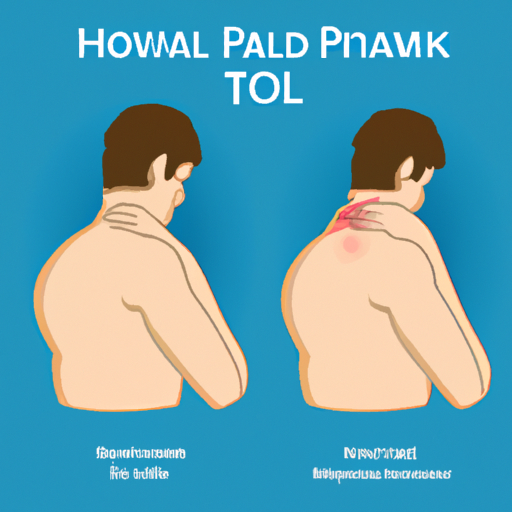how to treat neck and shoulder pain effective methods and tips


Title: How to Effectively Treat Neck and Shoulder Pain
Introduction:
Neck and shoulder pain can significantly impact one's daily life, causing discomfort and hindering movement. If you are experiencing this type of pain, it is essential to understand effective ways to treat and alleviate the discomfort. In this article, we will explore various methods and remedies to help you find relief from neck and shoulder pain.
1. Practice Proper Posture:
Maintaining good posture is crucial in preventing and reducing neck and shoulder pain. When sitting or standing, ensure your spine is aligned, shoulders are relaxed, and chin is slightly tucked in. Avoid slouching or hunching forward, as this can strain the neck and shoulder muscles.
2. Stretch and Strengthen:
Performing regular stretching and strengthening exercises can help relieve tension and improve flexibility in the neck and shoulder area. Simple exercises such as neck rotations, shoulder rolls, and gentle stretches can alleviate stiffness and promote better blood circulation.
3. Apply Heat or Cold Therapy:
Applying heat or cold therapy to the affected area can provide immediate relief from neck and shoulder pain. Heat therapy, such as using a hot water bottle or warm towel, helps relax the muscles and increase blood flow. Cold therapy, on the other hand, can reduce inflammation and numb the area. Experiment with both methods to see which works best for you.
4. Consider Massage or Acupressure:
Massage therapy and acupressure can provide targeted relief for neck and shoulder pain. A professional massage therapist can use specific techniques to release tension and promote relaxation in the affected muscles. Alternatively, you can try acupressure by applying pressure to specific points on the neck and shoulders to stimulate pain relief.
5. Use Over-the-Counter Pain Medication:
Over-the-counter pain medications, such as ibuprofen or acetaminophen, can temporarily alleviate neck and shoulder pain. However, it is essential to consult with a healthcare professional before using any medication to ensure it is suitable for your condition.
6. Improve Ergonomics:
Evaluate your workspace or daily activities that may contribute to neck and shoulder pain. Ensure your workstation is ergonomically designed, with an adjustable chair, proper keyboard and mouse placement, and a monitor at eye level. Making these adjustments can significantly reduce strain on your neck and shoulders.
7. Relaxation Techniques:
Stress and tension can exacerbate neck and shoulder pain. Engaging in relaxation techniques such as deep breathing exercises, meditation, or yoga can help calm your mind and relax your muscles. Creating a daily routine that includes these techniques can contribute to long-term pain relief.
Conclusion:
Neck and shoulder pain can be debilitating, but by implementing these effective treatment methods, you can find relief and improve your quality of life. Remember to maintain good posture, incorporate stretching and strengthening exercises, apply heat or cold therapy, consider massage or acupressure, use over-the-counter pain medication cautiously, improve ergonomics, and practice relaxation techniques. However, if the pain persists or worsens, it is essential to seek medical advice for a proper diagnosis and further treatment options.
Cách trị đau cổ vai gáy













Comment